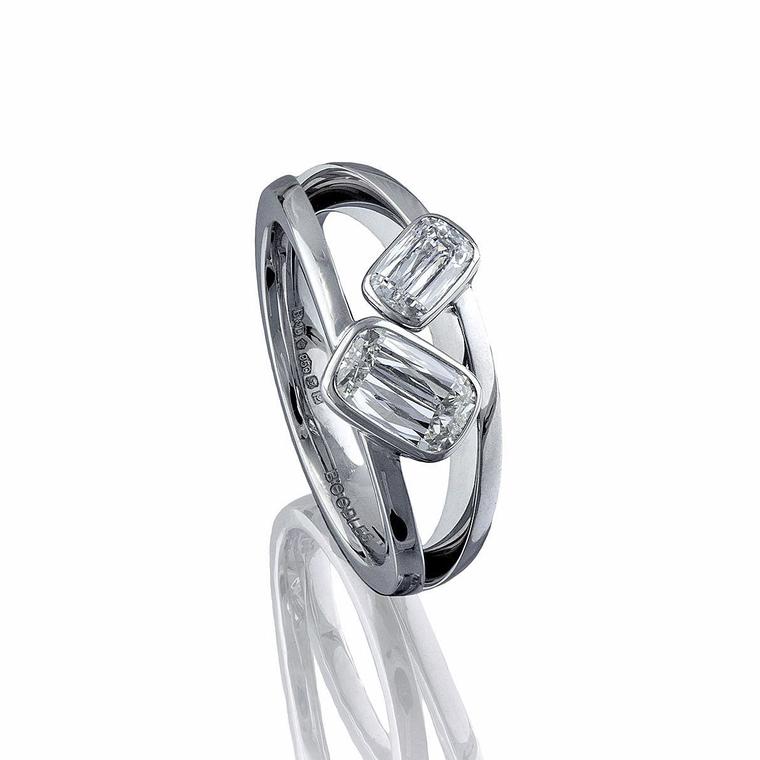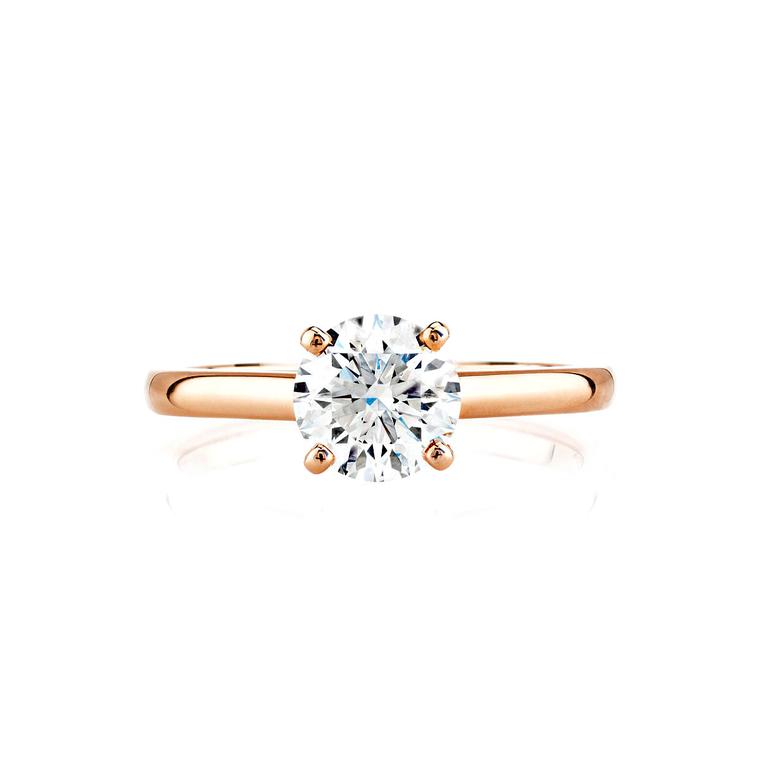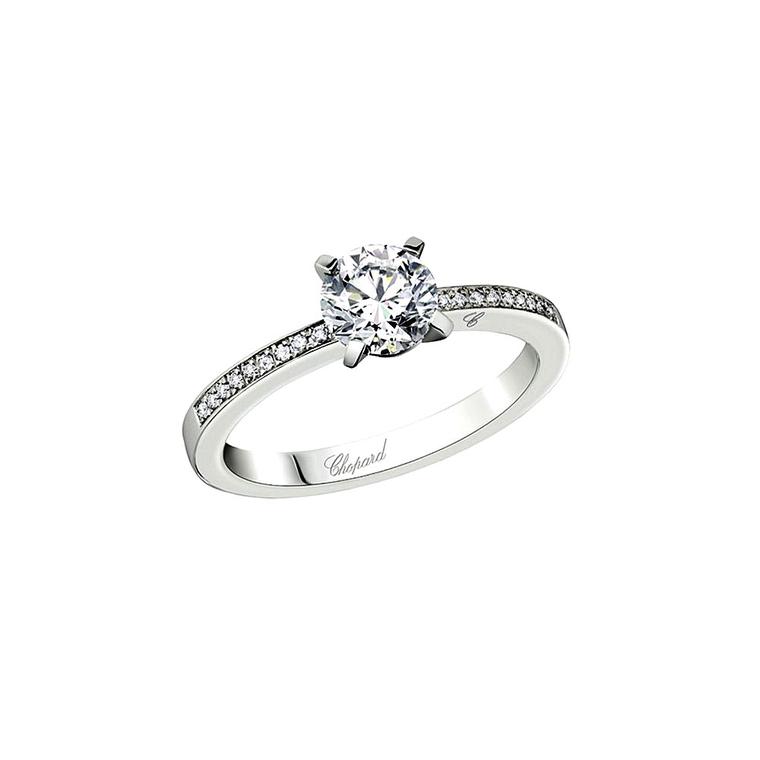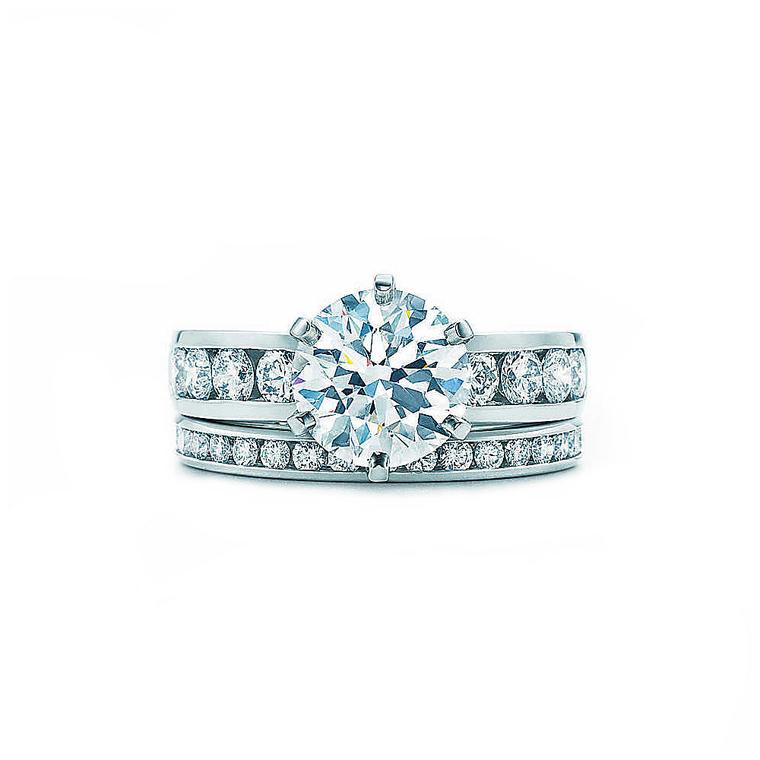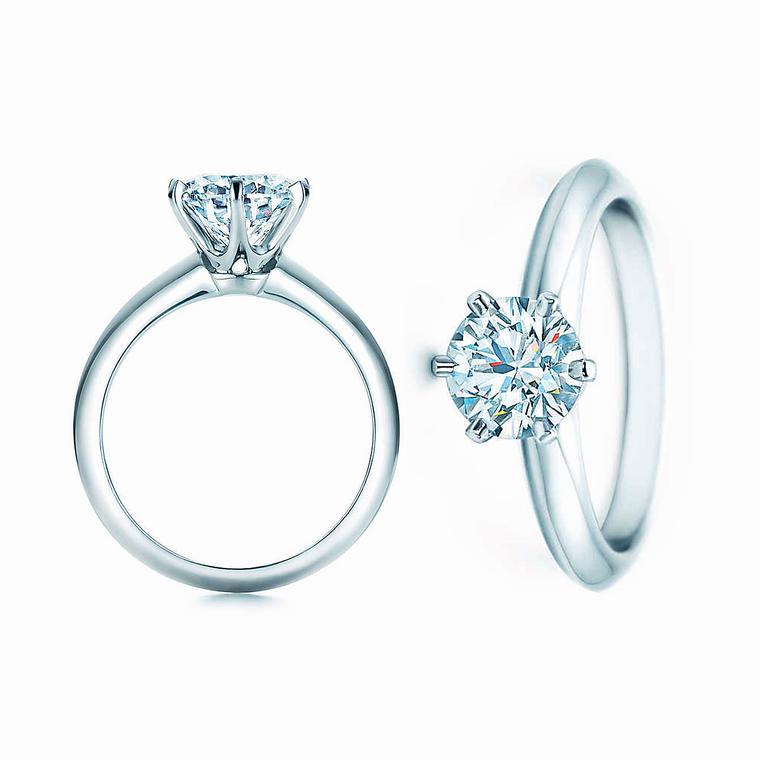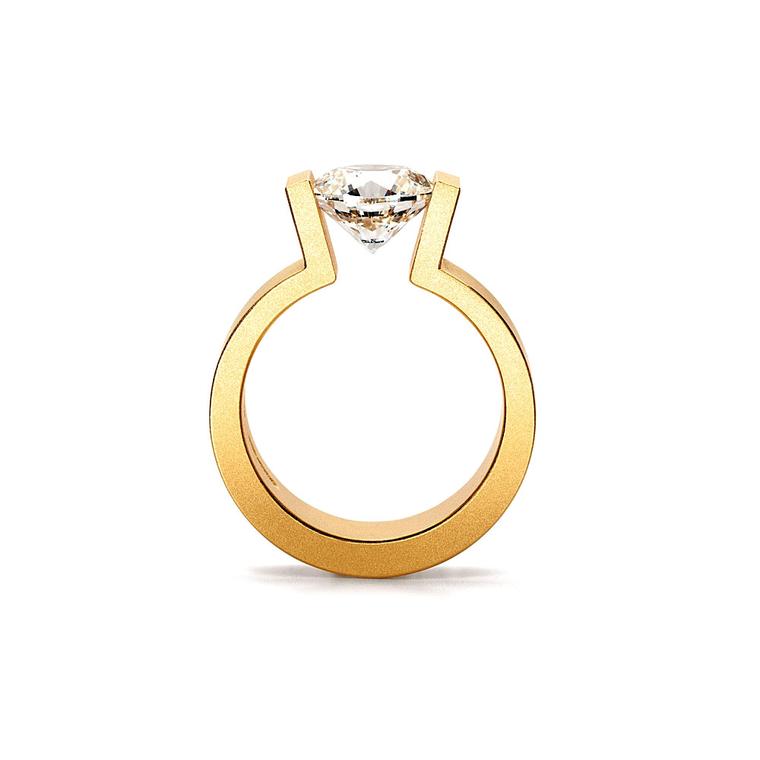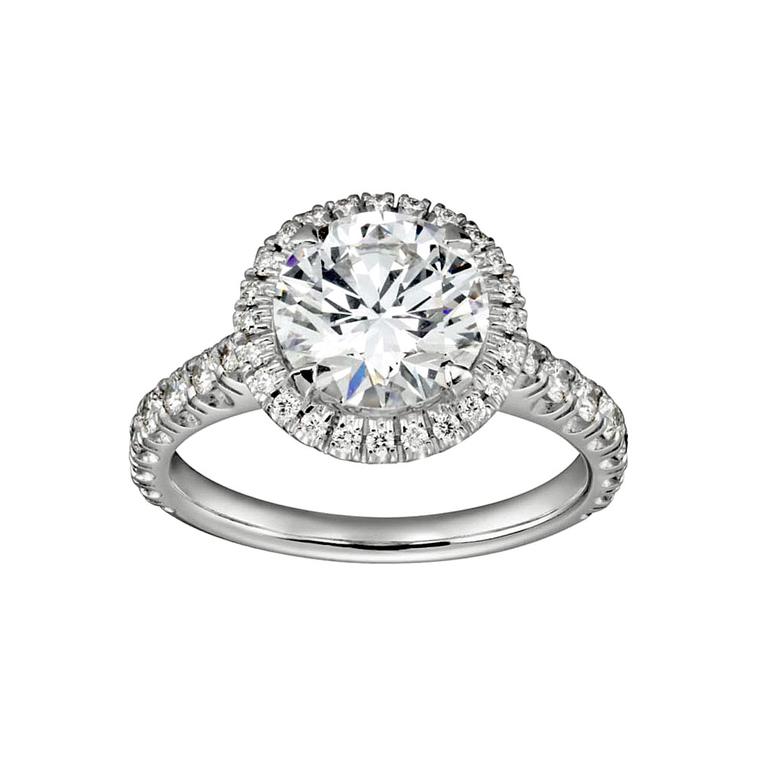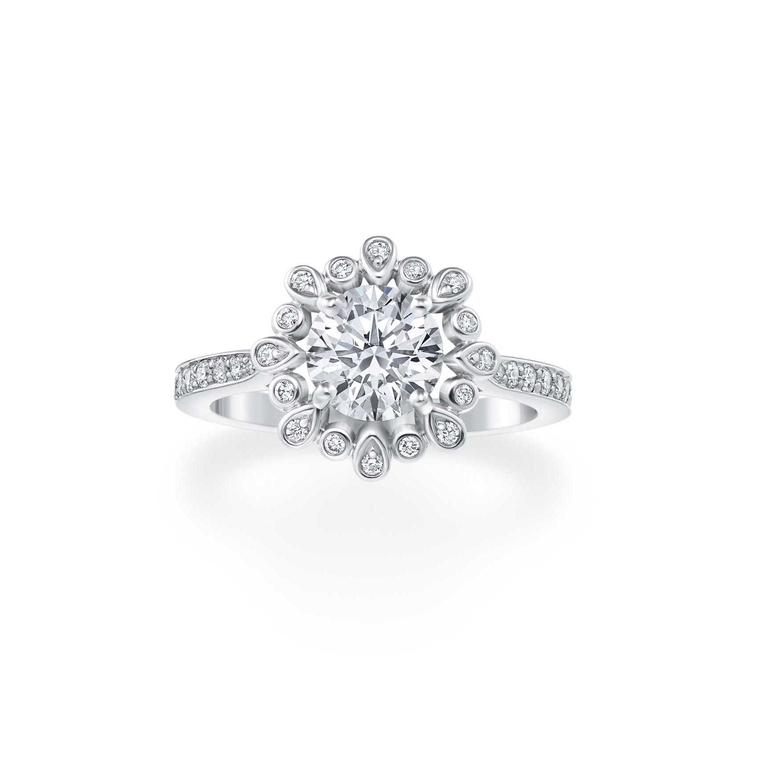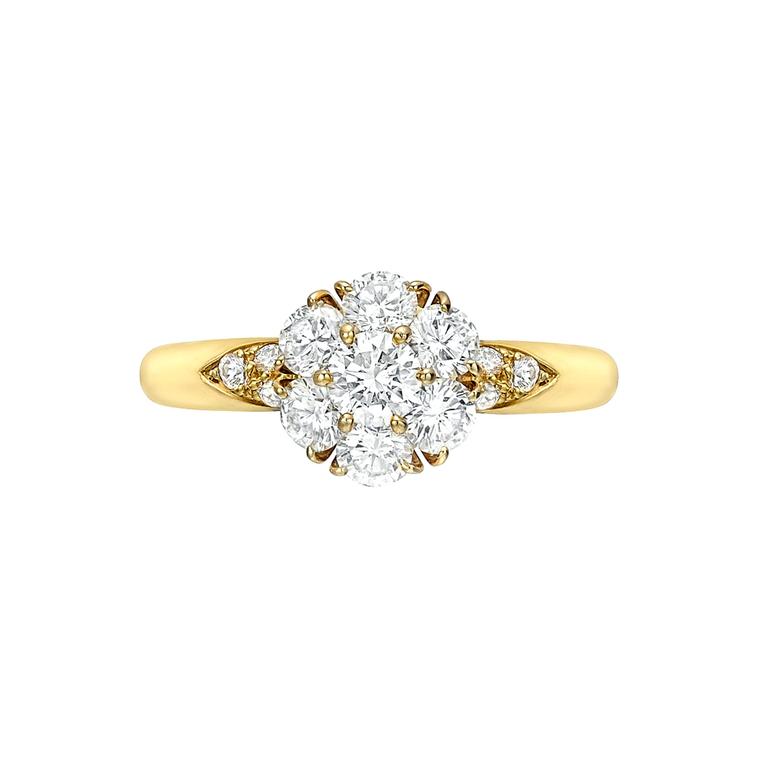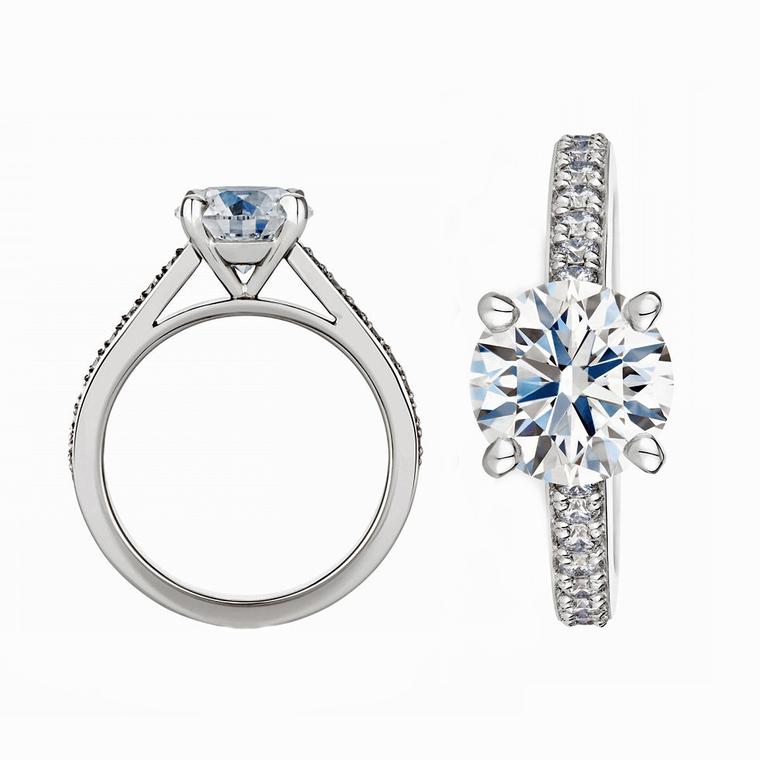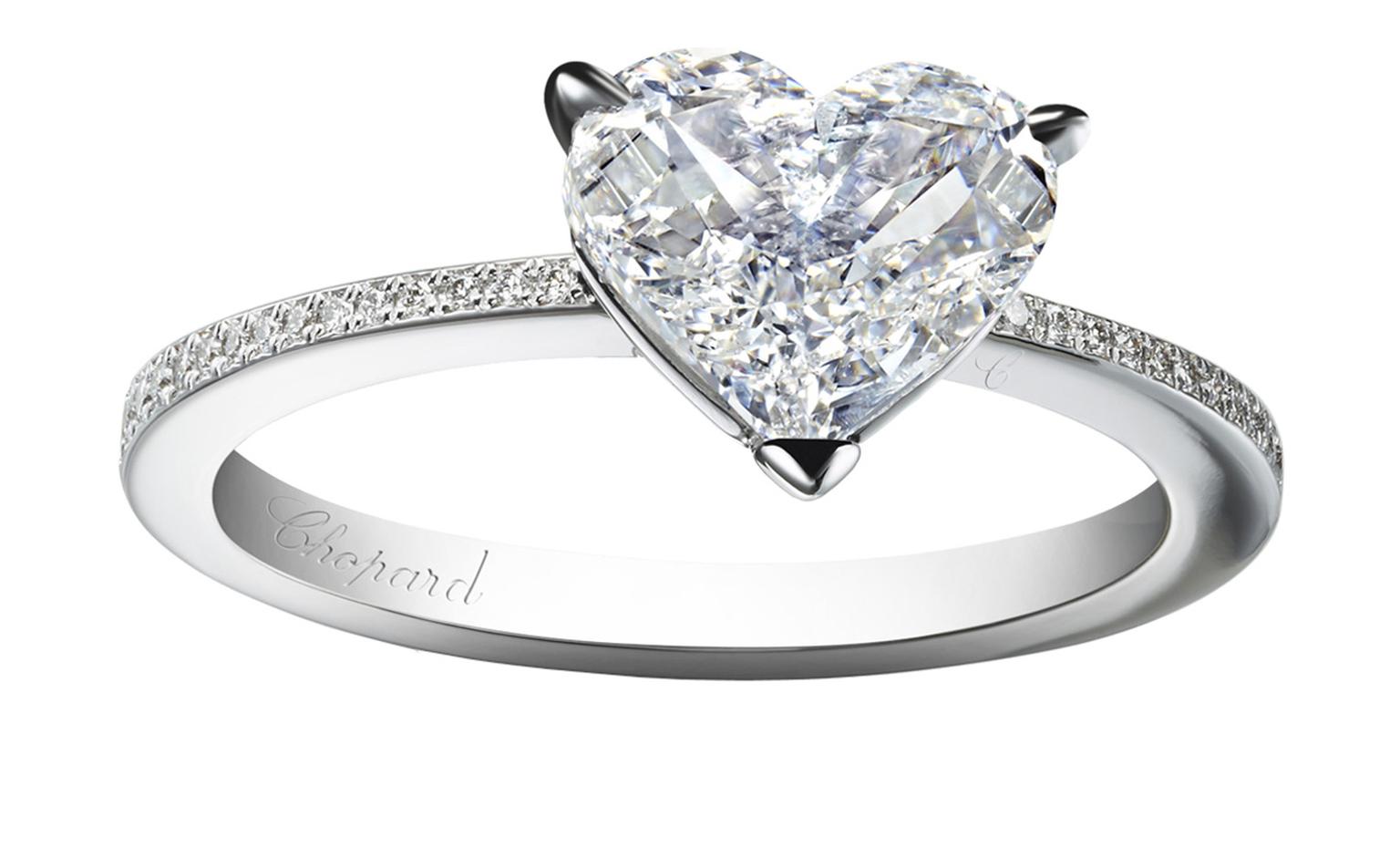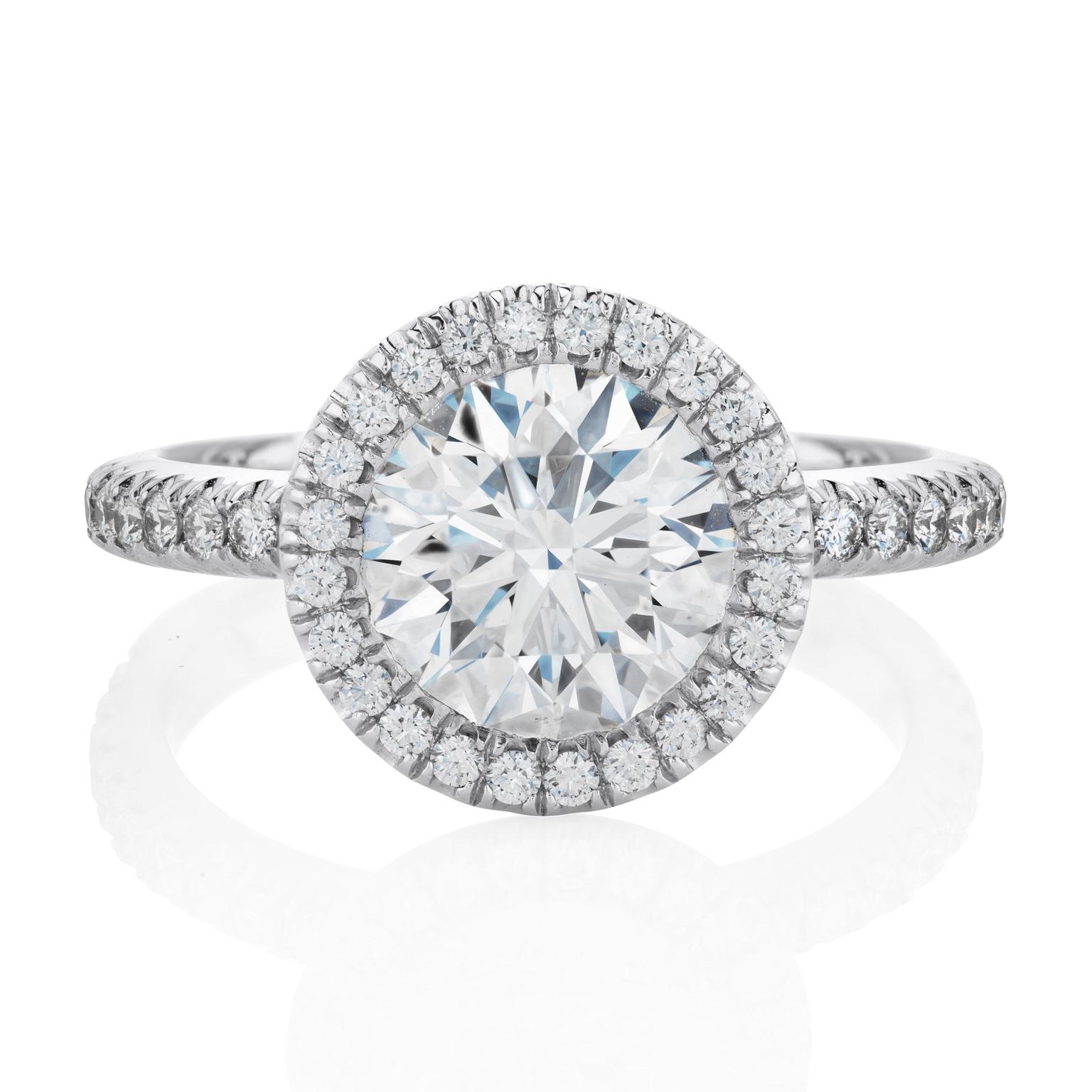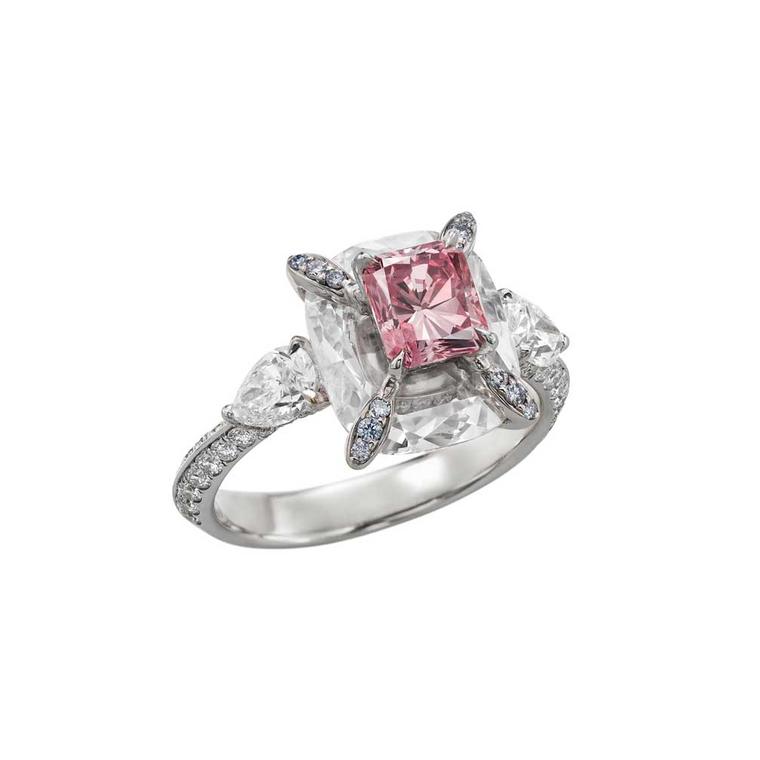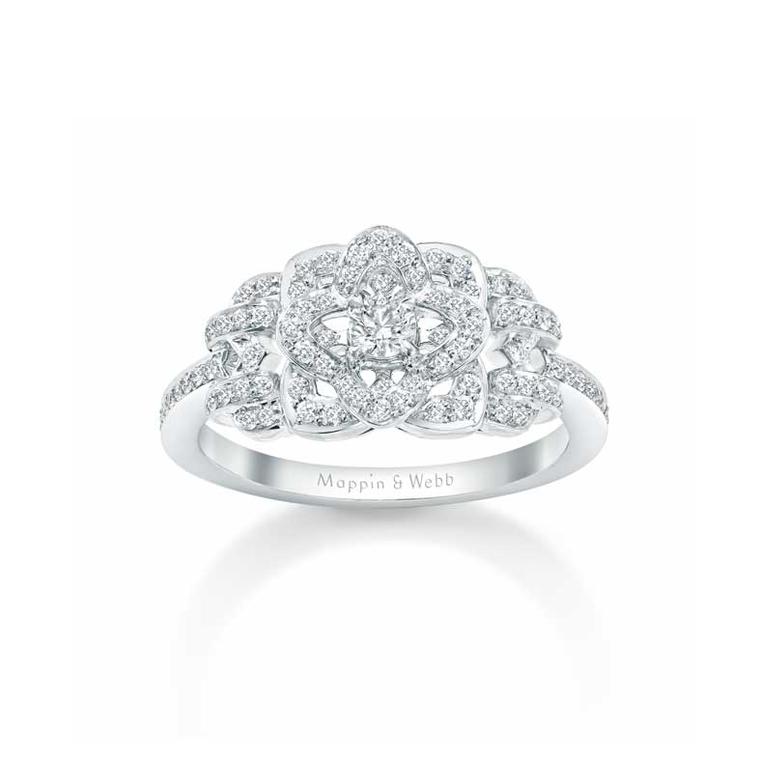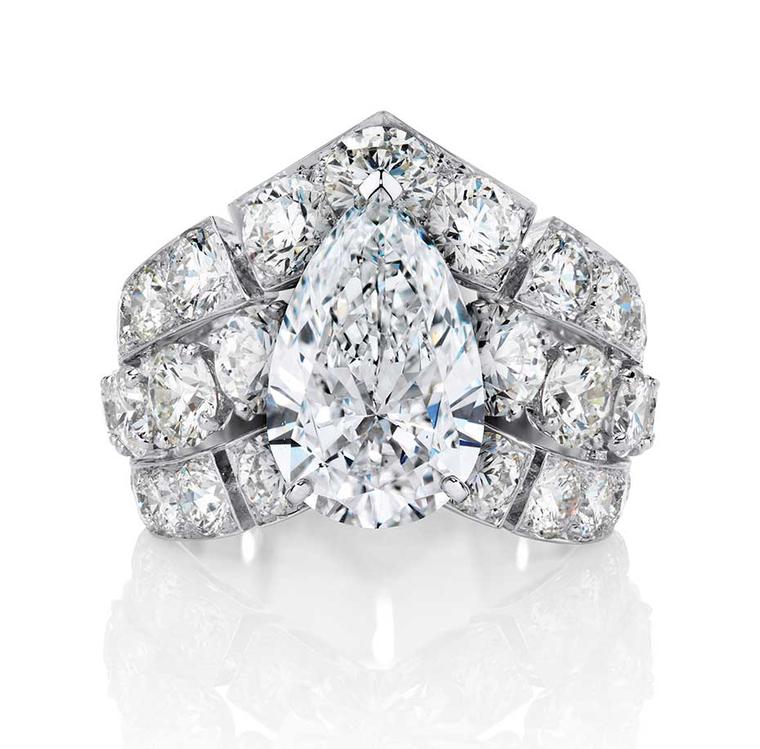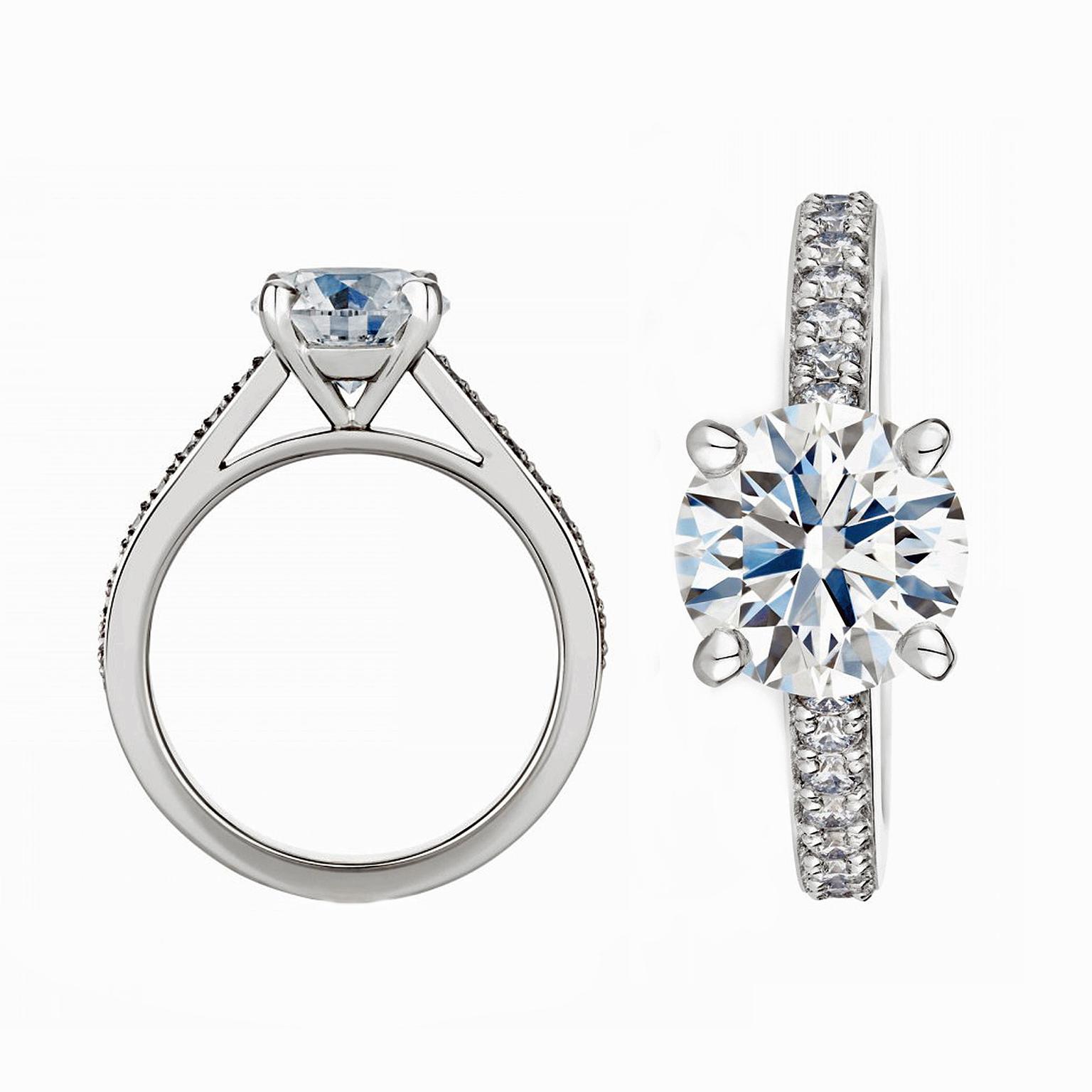
Halo, pavé, prong, bezel - to the uninitiated, delving into the world of diamond settings can be very confusing. However, the stone setting you decide on can have a dramatic effect on the appearance of your diamond engagement ring and can even make the centre stone appear larger or more sparkly.
Prong setting
The classic prong setting, whereby the diamond is held in place by small metal claws, is still the most common. Often used in solitaires, it usually features four or six prongs, which can be rounded, pointed, flat or v-shaped. As a minimal amount of metal is used, this diamond setting allows more of the centre stone to be seen. However, be aware that the prongs can catch on clothing so need to be checked regularly to ensure that they remain secure. The Classic Solitaire De Beers engagement rings have a refined four-prong setting with perfect proportions that elegantly lift the diamond up to the light.
Grain setting
Grain setting, sometimes referred to as bead setting, is when tightly set pavé diamonds cover the whole or part of the band, as illustrated in the classically romantic Chopard engagement rings from the For Ever collection. The smaller diamonds are set so closely together that the tiny beads, or prongs, holding them in place are hardly noticeable which, in turn, means that they catch the light beautifully with every movement of the hand.
See more romantic diamond engagement rings
Tiffany setting
If you have a penchant for classic Tiffany engagement rings, chances are they feature a diamond in the famous Tiffany setting. Developed by Tiffany & Co. in 1886, this setting maximises the light passing through the diamond, thus increasing its brilliance. Other jewellers offer similar six-prong settings but, as the Tiffany setting has been trademarked, none are quite the same as the original.
Read more on the Tiffany setting
Bezel setting
The bezel setting also goes by the rather unglamorous name of rub-over setting, and here the diamond is surrounded by a thin, metal rim, which holds it in place. The metal can completely encircle the stone or, in a partial bezel setting, the sides are left open. Bezel diamond settings create a sleek, modern look, and their flat design means they are practical for an active lifestyle as they won’t snag on clothing. The new Boodles engagement ring from the Pas de Deux collection feature two bezel-set Ashoka cut diamonds in a design that is both stylish and playful.
Read more about Ashoka cut diamonds
Channel setting
In this setting, diamonds are tightly embedded into a grooved channel without the use of prongs. The diamonds can cover the entire band or just decorate the sides near the centre stone. Channel setting is often used on rings that are designed to be stacked together, such as wedding bands and eternity rings. The Tiffany channel-set wedding band is a perfect match for this, where the classic six-prong setting is also enhanced by a band of channel-set diamonds.
Cathedral setting
Cathedral diamond settings are every bit as impressive as their grand name. This setting elevates the stone above the shank, and also has the added bonus of making the diamond seem larger than it actually is. The arches of metal that frame the diamond, which is secured with a prong, bezel or tension setting, do indeed resemble the graceful arches found on a cathedral. Named after the location of the brand’s first flagship store, the Old Bond Street engagement ring from De Beers, with its regally raised solitaire, is the epitome of a timeless classic.
Read more about the Old Bond Street De Beers engagement rings
Tension setting
As the name suggests, tension or compression between the metal is used to hold the central diamond in place, giving the impression that it is suspended in mid-air. One of the most complicated designs, lasers are used to make tiny grooves in the band, which match the diamond perfectly to grip it securely in place. The tension setting gives a very contemporary look, and Niessing is the expert - the clean lines in this yellow gold Niessing engagement ring allow the diamond to really stand out.
Graduated diamond setting
The graduated diamond setting is similar to the grain setting but the diamonds vary in size, from larger to smaller or vice versa, creating the appearance of flowing like a ribbon from the centre stone. In the new Blossom Harry Winston engagement ring, a halo of smaller diamond petals surrounds the central stone, while the platinum band is covered in graduated diamond pavé.
See more floral diamond engagement rings
Halo setting
In the halo setting, tiny diamonds surround the centre diamond in a concentric circle or square to add an extra layer of sparkle. Diamond engagement rings with this setting often have a romantic, vintage feel, with the addition of the smaller diamonds making the centre stone appear larger. As the name suggests, in a double halo setting, two rows of diamonds encircle the central stone. Inspired by the classic Solitaire 1895, the Destineé Cartier engagement ring features a brilliant-cut diamond surrounded by a halo of micro pavé diamonds on a platinum band, which is also set with smaller stones.
Cluster setting
In cluster settings, stones are literally clustered together to make them look like one larger diamond. There can be one large centre stone surrounded by smaller stones, or they may all be of a similar size. In the Van Cleef & Arpels diamond engagement ring featured here, available at 1stdibs.com, six smaller diamonds are clustered around the centre stone in the shape of a flower, with further diamonds on the shoulders. Because the diamonds are set so closely together, with the minimal use of metal, they flow into one another, giving the impression of being one single stone.


